An NREL study will outline a strategic network of U.S. West Coast ports and port infrastructure upgrades that could collaboratively unlock the potential of commercial-scale floating offshore wind energy technology deployment.
Wind Energy Technologies Office
September 15, 2022
The West Coast Ports Strategy Study is designed to inform investment in ports and decision-making by West Coast states to enable commercial-scale floating offshore wind energy technology deployment.
As activities on the U.S. West Coast ramp up for deployment of commercial-scale floating offshore wind energy projects, without needed upgrades, the lack of suitable port infrastructure could make it difficult to domestically manufacture and deploy major components and install projects efficiently.
The U.S. Department of Energy and the National Renewable Energy Laboratory today announced the launch of the West Coast Ports Strategy Study to inform investments in ports, helping to enable commercial-scale deployment of floating offshore wind energy. This collaborative effort will convene key decision makers from West Coast states, coordinate ongoing port assessments from California and Oregon, and contribute new analyses of cost-benefit tradeoffs of port strategies, including consideration of impacts on host communities, that can inform wider industry planning.
This project announcement supports the Floating Offshore Wind Shot, which aims to drive U.S. leadership in floating offshore wind.
Learn more about DOE’s plan to advance floating offshore wind energy:
-
 White House launches floating offshore wind initiatives to deploy 15 GW, power 5 million homes, and lower costs by 70% for goal of 30 GW by 2035.
White House launches floating offshore wind initiatives to deploy 15 GW, power 5 million homes, and lower costs by 70% for goal of 30 GW by 2035. -
 Learn about how the Floating Offshore Wind Shot plans to accelerate breakthroughs for more abundant, affordable, and reliable clean energy solutions.
Learn about how the Floating Offshore Wind Shot plans to accelerate breakthroughs for more abundant, affordable, and reliable clean energy solutions. -
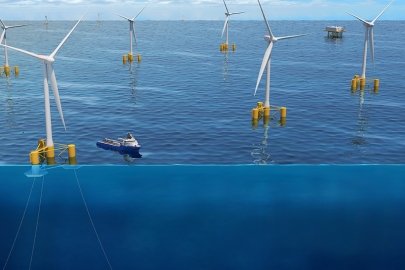 The FLoating Offshore Wind ReadINess (FLOWIN) Prize, a $5.75-million competition, is designed to help develop a domestic supply chain and accelerate market readiness of floating offshore wind energy designs in the United States.
The FLoating Offshore Wind ReadINess (FLOWIN) Prize, a $5.75-million competition, is designed to help develop a domestic supply chain and accelerate market readiness of floating offshore wind energy designs in the United States. -
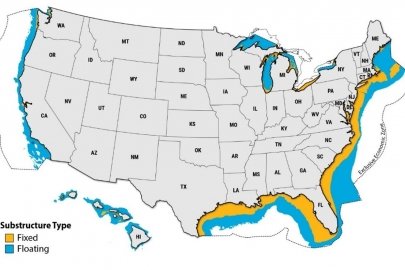 Floating offshore wind potential offers more than two times the energy equivalent of annual U.S. electricity consumption.
Floating offshore wind potential offers more than two times the energy equivalent of annual U.S. electricity consumption. -
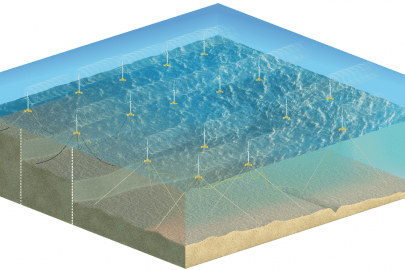 The Floating Offshore Wind Array Design project will inform design decisions and help ensure cost-efficient and responsible deployment.
The Floating Offshore Wind Array Design project will inform design decisions and help ensure cost-efficient and responsible deployment. -
 An NREL study will outline a strategic network of U.S. West Coast ports and port infrastructure upgrades.
An NREL study will outline a strategic network of U.S. West Coast ports and port infrastructure upgrades. -
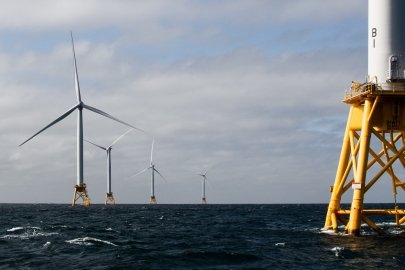 The U.S. Department of Energy's Wind Energy Technologies Office funds research nationwide to develop and deploy offshore wind technologies.
The U.S. Department of Energy's Wind Energy Technologies Office funds research nationwide to develop and deploy offshore wind technologies. -
 DOE Announces $1.6 million for a jointly funded project supporting the coexistence of offshore wind with bats on the West Coast.
DOE Announces $1.6 million for a jointly funded project supporting the coexistence of offshore wind with bats on the West Coast. -
 The National Offshore Wind Research and Development Consortium (NOWRDC), which was established with funding from the U.S. Department of Energy (DOE), has selected five new projects to receive a total of $3.5 million for ocean coexistence and transmission.
The National Offshore Wind Research and Development Consortium (NOWRDC), which was established with funding from the U.S. Department of Energy (DOE), has selected five new projects to receive a total of $3.5 million for ocean coexistence and transmission. -
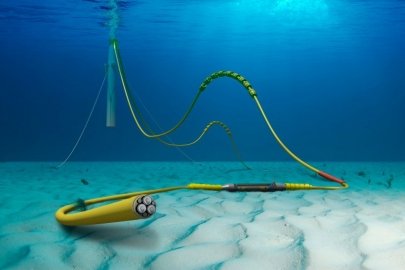 PNNL will conduct a literature review of West Coast offshore wind transmission research to date.
PNNL will conduct a literature review of West Coast offshore wind transmission research to date. -
 ARPA-E intends to announce $31 million in funding through phase two of its ATLANTIS program.
ARPA-E intends to announce $31 million in funding through phase two of its ATLANTIS program.

